Stockpiling medicine is not an easy task: it’s about money, it’s about making the best choice, it’s about availability. You should have at least a month’s medical supply, and the medications you stockpile can be easy to come by and are over-the-counter medications available at any large pharmacy.
But others you need are more difficult to get. They include narcotic medication and other prescription medications you have been prescribed by a doctor. Narcotics are good for severe pain but are potentially addicting so most doctors–even yours–won’t write a prescription for it without good reason.
That’s why we made it easy for you, and put up a list of those meds that you should not skip from your medical stockpile.
Tips to Follow on Buying Meds
In some cases, the prescription medications can be gotten from your doctor. For prescriptions, including narcotics that you can’t get at the doctor’s office try looking for an overseas pharmacy online, but it’s hard to predict which ones will be reputable or not.
Try purchasing just one or two items from them and if they deliver reliably a medication that has the manufacturing label intact with the right medication name, you can continue to purchase from them.
You have to familiarize yourself with the generic names of medications because when you purchase over-the-counter medications or buy them online, even overseas, the generic forms are often much cheaper by far than the name brands. Knowing the generic names will help you determine what medications you’re getting online as well.
Often the labels are in another language but the generic name of the medicine is very similar or the same as the English version. These should be good substitutes for American-made medications.
But there are also other ways to get these medications. I myself needed an antibiotic, and I went to the drugstore and didn’t tell them I was a doctor. In some situations and in some places, you can get antibiotics and non-narcotic pain medication over the counter. You just have to claim that you are on treatment and you need to continue it, but that you’re not at home and that you need a dosage for one day. Chances are good nowadays that they’ll ask for your ID and your doctor’s phone number.
What if you don’t have access to what you need, though? Can these drugs be replaced with other substances, such as veterinary substances? Yes they sometimes can, if you keep the proportions, and with caution, but you have to check the dose because this is really important. Otherwise, if you take a dosage for a horse you will die. Look on the blister and see what it is, then divide it with the knife, in 2, 3, 4, 5, dosages as necessary.
As for the storage, stockpile medications nearby medications that are related to one another. For example, stock the respiratory medications together, the stomach medications together, etc. In a crisis, it pays to be organized.
Items past their expiration date may still work, however the will have a lesser potency. In rare cases, a medication much past its expiration date will have altered its components to contain something dangerous if you take it but it is rare. When in doubt and if in need, you can take something past its expiration date but it will have a lesser efficacy (effectiveness).
10 Categories of Medication that You Need
There are several categories of medications you’ll want to purchase, and you shouldn’t miss the following types of medication:
- Cold and flu medication: For congestion, cough, the pain of sore throat and body aches).
- Allergy medications: Include sedating and non-sedating types of medication.
- Pain medications: Include over the counter and prescription pain medications.
- Breathing medications: This especially includes inhalers.
- Gastrointestinal medications: For heartburn, stomach distress, diarrhea and constipation.
- Skin medications: These include sunscreen and medications for various rashes and skin problems.
- Antibiotics: Include those that cover for the majority of infections you might encounter.
- Birth control pills: A disaster is no time for a pregnancy, especially if nuclear radiation is present.
- Psychotropic medications. This especially involves medication for sleep and anxiety.
- Children’s medications: If you have a baby or young child, you’ll want liquid medications specially designed for their needs.
There needs to be many more medications taken and stockpiled in disabled people and seniors’ medications than in children’s medications, and these medications include:
- Fiber laxative
- Aspirin as a blood thinner
- Atherosclerosis medication. Mevacor (lovastatin); Zocor (simvastatin)
- Blood thinners for stroke Coumadin (warfarin)
- Medications for arthritis Aleve (naproxen)
- Heart burn medications. Zantac (ranitidine).
- High blood pressure medication. (Lisinopril); Tenormin (atenolol).
A Few More Words on Cold and Flu Medication
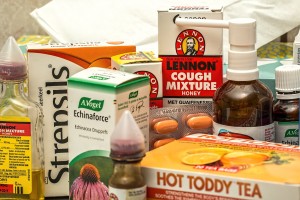
The cold and flu are different viral infections but they share some of the same symptoms, so they are included together.
Cold and flu symptoms include congestion in the nose, sore throat, sinus pain, and cough.
The flu also has a great deal of body aches and malaise, where you just don’t feel good at all and need to lie down and rest.
Medications you’ll want to have on hand include the following (the brand name is capitalized, the generic name is in parentheses):
- Sudafed (pseudoephedrine): This is for nasal and sinus congestion. You have to ask for it behind the pharmacy counter even though it is not a prescription medication because it is one of the main ingredients in methamphetamine, and they don’t want people to purchase large quantities of it at a time. Follow package instructions for sinus and nasal congestion. Usually you take 1-2 pills every four hours.
- Tylenol (acetaminophen), Advil (ibuprofen) or Aleve (naproxen): These are all good medications for fever, sore throat, and body aches. Take two every four to six hours.
- Robitussin DM (dextromethorphan): This comes in pill or liquid form and helps the cough. You need to be careful and just purchase plain Robitussin DM. Robitussin CF contains a decongestant that you already are taking when you take Sudafed. Robitussin DM also contains guaifenesin which breaks up the thick mucus in your system.
What About Pain Medications?
There is a range of medications that are successful for pain. The three main categories are simple pain relievers, anti-inflammatory medication, and narcotic pain relievers.
- Tylenol (acetaminophen): This is a simple fever and pain reliever that works on all sorts of pain. It is safe to take by anyone who does not have liver disease as it is metabolized by the liver. It is usually taken in adults as 2 500-milligram tablets every 4-6 hours. It has the added advantage of being able to be taken with anti-inflammatory medication in a pinch when the pain is severe and you want to take something more than Tylenol.
- Advil or Motrin (ibuprofen), Aleve (naproxen): These are anti-inflammatory medications that work best on pain caused by inflammation like arthritis. They also work on fever and generic pain. Some people will get stomach upset if they take these medications on an empty stomach so it’s best to take them with a small amount of non-acidic food. Try taking 2-3 tablets or capsules of ibuprofen every 4-6 hours. Take naproxen at 2 tablets every 8 hours.
- Narcotic pain relievers. These work for strong pain and include Vicodin (hydrocodone and Tylenol) and oxycodone. Give one to two tablets every 6 hours. Be alert for signs of confusion if the patient is taking too much. You can get this online or get a prescription from your doctor.
What You Need to Know about Antibiotics
Choosing a simple antibiotic is difficult because people have allergies and intolerances to antibiotics and there is no perfect antibiotic for every illness. Poll your family members for allergies before selecting one.
Any antibiotic must have several properties: it must be inexpensive, easy to administer, it mustn’t cause resistance and it must act on as many bacteria as possible, in as short a time as possible. A good choice is a broad spectrum antibiotic like cephalexin or Keflex. Two other choices include erythromycin (or azithromycin) and sulfa antibiotics like Bactrim or Septra (trimethoprim and sulfamethoxazole).
If you have these five classifications of antibiotics, you’ll have covered for several kinds of infections including:
- Cephalexin: Respiratory and upper respiratory infections, skin infections
- Erythromycin or azithromycin: Upper respiratory infections and lower respiratory infections such as “walking pneumonia”, skin infections
- Bactrim or Septra: bladder infections, some gastrointestinal infections.
- Cipro or Levaquin: used for bladder infections, respiratory infections, or skin infections
- Flagyl: used for parasitic infections and some gastrointestinal infections
Antibiotics won’t cure the common cold and they will do nothing for influenza but it does wonders for sinus infections stemming from the cold, a case of strep throat, and certain cases of bronchitis, pneumonia, bacterial skin infections and bladder infections.
You need to use them judiciously, when you know that you’re dealing with a bacterial infection. This means you have a fever, yellow or green drainage from the nose or coughed up from the lungs and redness around a wound. Strep throat and bladder infections are hard to determine. You just have to guess.
Give the body, the limb or the spot in question where the injury occurred, time to recover. Do not immediately jump to drugs, don’t start pouring the entire reserve of drugs down the patient, because you won’t solve anything like that. Sometimes the simplest solution is to not do anything, not to force it.
If you dole out antibiotics before you give the body a chance to heal, you’re wasting valuable medical supplies that may be needed later. Wait and see, and only when things are going towards the worse end should you start with antibiotics.
Breathing Medications You Need to Stockpile
In some disaster situations, even people without asthma will have problems with wheezing and shortness of breath. The best choice for this is an inhaler containing a beta-agonist, which opens the breathing passages.
The trick is to use these medications in such a way that the medication gets in your lungs and not in the back of your throat. With inhalers, you take a deep breath with the inhaler in your mouth and when you’re in the middle of the deep breath, press the plunger and keep breathing in. The medicine should get sucked down into your bronchial passages.
This is the main medication you’ll need:
- Albuterol: This is available in an inhaler form but it can be given in liquid form to young children. It needs a prescription so get one from your doctor or on the internet. Take two puffs as directed above every four hours for wheezing and cough.
- Primatene Mist: This is a less effective over-the-counter medication containing aerosolized epinephrine. Take two puffs every four hours. Use it when you absolutely can’t get albuterol.
Gastrointestinal Medications
There are a large variety of medication choices for the gastrointestinal system and you’ll need to condense them down to just a few. You’ll need something for the upper part of your GI system—your stomach.
Medicines for excess stomach acid and heartburn include TUMS, a medication like Zantac, and a medication like Prilosec. TUMS is just calcium carbonate and it quickly neutralizes the burn of heartburn or the rumbling of an acid stomach. If you can’t afford to wait for a few hours, try Zantac, which is a histamine-2 blocker, blocking the production of stomach acid.
If you can afford to wait a few more hours but want all day relief, try Prilosec, which is a proton pump inhibitor. It more thoroughly blocks the production of stomach acid; it just takes a few hours to kick in. The medication or medications you choose for stomach problems and heartburn depend on your personal preference and on how much room you have in your stockpile.
For nausea, the standard treatment is Compazine, given as 10 mg tablets or 25 mg suppositories if the person cannot tolerate oral medications.
There are medications for constipation and diarrhea — problems that can befall anyone in a disaster situation. For constipation, you can choose Miralax, a medication that must be mixed with a glass of water, X-Lax, which contains natural sennosides, or Correctol, which contain biscodyl. Of the three, biscodyl is the strongest, which means it might result in diarrhea if taken to excess. Choose the medication you are most familiar with and stockpile it.
For diarrhea, you can choose Kaopectate, which is for use in adults and very small children. It is a liquid medication that doesn’t need water to use. You can also choose something like Imodium-AD (loperamide), which is a pill form of a medication helpful in treating diarrhea when the disease is not a result of an infection. It can be taken only by adults as 1-2 pills every 6 hours or closer together if the diarrhea is persistent. If space is an issue, select only one of these medications.
What You Need for Treating Your Skin
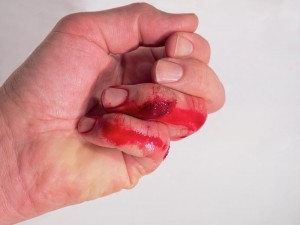 No medication stockpile would be complete without items for the treatment of wounds, sprains and strains.
No medication stockpile would be complete without items for the treatment of wounds, sprains and strains.
There are a number of items to choose from. While no one might become injured, disaster situations put people in positions they can’t predict so make sure your injury kit is well stocked.
Items to stockpile include:
- Antibiotic ointment like bacitracin or Neosporin
- Antiseptic cleansing wipes
- Scissors
- Cloth or paper medical tape 1-2 inch wide
- 4 x 4 gauze; it can be folded over when the injury is small.
- Ace bandages — 3-5 inches wide for the lower and upper extremities
- Sling for the arm in adult and children’s sizes
- Splinter remover to remove foreign bodies
- Ice pack; you can buy chemical ice packs that turn cold on hitting it with a fist
You can get very elaborate with injury supplies, such as buying upper and lower extremity air splints and buying cervical collars for neck injuries but that may be overkill. The above list will cover the vast majority of injuries you’ll get in a disaster situation.
As for skin ointments and creams, there are several medications you need to have on hand for your skin. The first is antiseptic ointment. Use this for cuts and scrapes so they don’t get infected. Conditions may not be optimum for keeping a cut or scrape clean so using the ointment is the next best thing. Most antiseptic ointments contain either neomycin or bacitracin or even both. An ointment called Neosporin is good for all types of open injuries to the skin and contains both medications.
You might add a cream or ointment that contains hydrocortisone. The maximum over the counter strength of hydrocortisone you can get is 1 percent, which is effective for many different rashes. Rashes like poison ivy or other itchy rash can be managed with hydrocortisone cream. Allergic rashes can be treated with hydrocortisone cream as well.
These should be the basic when preparing your medicine supply. But don’t forget about the healing power of nature, and prepare yourself for replacing meds with natural remedies if needed.
DISCLAIMER: The data contained in this article are for informational purposes only, and do not replace by any means professional advice.
This article has been written by Radu Scurtu for Survivopedia.


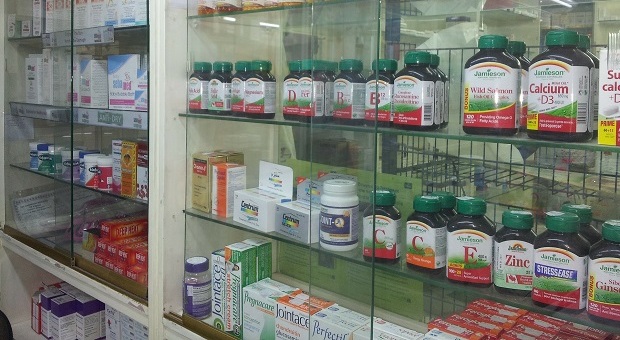



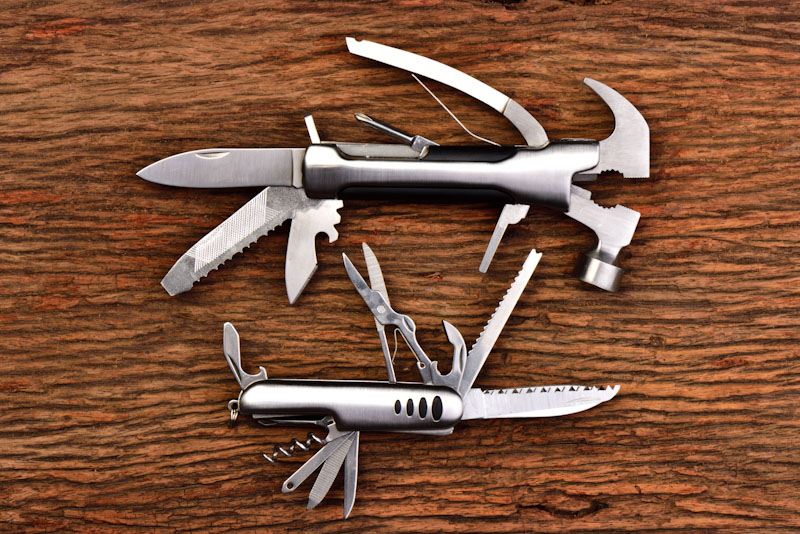
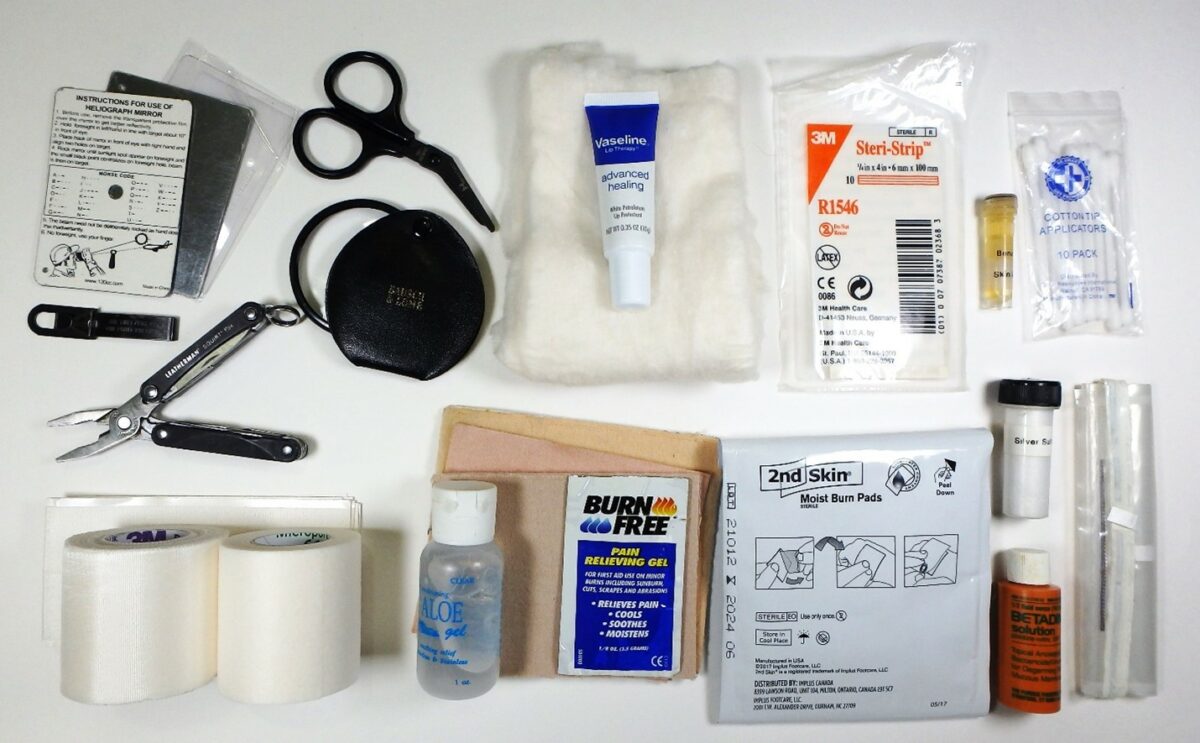
Pingback:Top 10 Types Of Meds You Need To Stockpile - Survivalot | November 23, 2015
|
Dojomom | November 23, 2015
|
Thank-you for making this list available. The list of bandages and supplies was especially helpful and poignant since I broke my foot last month. It made me think about what I would have done without access to professional medical help.
Chemical medications degrade over time, and have side effects, therefore, I am working on my own list of natural alternatives to necessary medications that can be grown or foraged in my own local area.
Again, this is a most helpful article, and I shall point my friends here.
Will | January 16, 2016
|
Did you compile a list of natural items? If so, would you post what you compiled so far? Thanks!
Eileen | January 20, 2016
|
I prefer essential oils, along with some homemade tinctures from wild plants, and my list is specific to myself. I took the list of chemicals and found high quality plants that would perform the same functions. Also, my type 2 diabetes responds well to three essential oils taken together, so I use them instead of Metformin. I use testing supplies to keep myself in check and maintain a supply of them.
Interestingly, Frankincense and Myrrh could cover all childhood illnesses. There are gaps, but it’s a good start. I recommend The Essential Oils Pocket Reference by Life Science Publishing to help determine what you would need for your own personal health. I wish I could be more helpful, but legally that is impossible.
Deborah | November 23, 2015
|
You usually have good information on your site, however, this time you’re off base. Medications, whether OT or prescription, have an indefinite shelf life. I have 3 friends who are pharmacists that all say the same thing, no expiration date. We all remember when there was not a date on medication. We are talking tablets, caplets , not insulin. But even insulin does not go bad as no meds go bad. Insulin will lose it’s effectiveness fairly quickly if not refrigerated, usually 30 to 45 days, so an increase in dosage is necessary to maintain control.
An independent study was done for meds 15 years old, no loss of effectiveness at all, still at full potency. It’s on the Internet.
I’m glad you are around to help us.
Have a good week and happy thanksgiving.
gritch | November 23, 2015
|
Is there a site that documents this?
Thanks.
Dawn | November 26, 2015
|
There is evidence that prescription medications have a much longer shelf life than as labeled. This article contains more information about the FDA study conducted on behalf of the military. http://www.wsj.com/articles/SB954201508530067326
Rick | November 23, 2015
|
Have to disagree with this comment. Use caution using meds outside of labeled expiration dates. Yes, they are conservative. Yes they are there to protect big Pharma from getting sued over degraded product. Yes, it increases sales. HOWEVER, they are also there to ensure that meds remain viable.
Be especially cautious with biologics, like humira, etc.
Aspirin when degraded doesn’t produce toxic byproducts. But the same cannot be said for ALL meds.
Use caution. The last thing you need in the event of a natural disaster or zombie apocalypse or whatever you are preparing for is a man-made crisis, by our failure to apply the most valuable agent to stockpile… Common sense.
Pam | December 23, 2017
|
If you vacuum pack your prescription meds they will last years.
Pingback:Top 10 Types Of Meds You Need To Stockpile | Freedom Newz | November 23, 2015
|
El guard | November 23, 2015
|
I am surprised that no ideas are given to help one stay healthy without supporting Big Pharma, & there are plenty of them : ) My response to this article also applies to the Medical Survival book, by this same author, which I bought. I recommend he broaden his education to include natural interventions that work.
Mahatma Muhjesbude | November 24, 2015
|
El Guard, if you knew how hard and long it is to become an MD, you’d give the author a break on ‘alternative methods to stay healthy’. Besides, THAT was not the topic. This article’s topic dealt with standard medical resources. So why would you expect any other topics besides what the article headlined something not on that topic. So why would you be surprised that ‘no ideas are given to stay healthy without supporting big pharma’ were discussed? That’s an entirely different subject?
For that you must research and get into ‘Alternative or Complimentary’ medicine and health. But I do think we have some articles on that in the archives here. Check out Top Ten Alternative Survial Remedies on the Survivopedia archives get you started if that’s what you’re interested in?
terry_D | November 23, 2015
|
One of the best painkillers I’ve used is 2 naproxen and 2 extra-strength acetaminophen taken together. Vicodin does not one thing for me – no sleepiness, no high and absolutely no pain relief, but the above works for one of my worst pains — toothache. Definintely eat something with the naproxen as the good doctor said. A slice of bread works very well for me, with bites taken between each naproxen pill. Even if you’ve had no problems with naproxen or ibuprofen (or anything else) irritating your stomach before, it can start doing so at any time. As for breathing problems, if you have nothing else, try coffee, or anything with caffeine) for a bit of relief. The caffeine acts as a bronchodilator, similar to theophylline, and it will help you breathe more freely.
Ron Davison | November 23, 2015
|
Thank You for your information. Do you have any “hard copies” that contain the information you supplied? …..If so I would like to have access to it. Thank You again….Ron
Pingback:Top 10 Types Of Meds You Need To Stockpile | Bsn Global News | November 24, 2015
|
Onyxtiger | November 25, 2015
|
The hardest thing to stockpile would be antibiotics as they all require a prescription. Need a friendly doctor that can order and get them for you.
Under pain relievers you left out one of the best ones ever……that’s good old aspirin. Advil, Tylenol, Aleve do very little for me.
Likewise, the narcotics do very little for pain relief for me.
Aspirin always works for me.
Aspirin was a pain reliever and fever reducer long before it was relegated to heart attacks/blood thinner status. People have forgotten that.
Apparently it’s hard on some people’s stomachs, but it’s still a good pain reliever.
sondyed7 | November 25, 2015
|
Antibiotics can be bought online, at a feed store or at a veterinarian’s clinic as fish / animal antibiotics. It’s the exact same medicine and if it’s safe enough for a little fish to take, then it’s safe for a human.
Of course, it’s always better to stay healthy by getting enough rest, drinking plenty of water, eating healthy food and staying close to the Lord.
Christina Lilienthal | November 25, 2015
|
Excellent information. Thank you so much for summarizing this material. I wrote it all down and will prepare an emergency kit that includes those items. I appreciate receiving the guidance and especially the reasoning behind the use of each medicine. In a disaster, resources can be vital to survival and the more we know on how to deal with the unknown the less fear we will feel. Thank you!!
Dawn | November 26, 2015
|
This is where I buy all of my antibiotic, no prescription needed. http://search.healthypets.com/search#w=antibiotic
Susan Lone | November 27, 2015
|
Just a comment regarding the antacids part. Remember 1 tsp of baking soda in 8 oz of water will also relieve heartburn and if you think you may be getting a bladder infection drinking this will take the burning away in about 20 minutes.
Richard Hahner | November 29, 2015
|
Specific list, a good start. You may want to add, any OTC that has Iodine, such as Kelp. Radiological effects can be helped in a small way with higher Iodine intake.
Pingback:Survival News 11/23/15 - Survival By Preparedness | November 30, 2015
|
Pingback:The Prepper’s Countdown Checklist to New Year’s Eve | Survival skills, survival guns, survival guide | December 1, 2015
|
kevin hoard | December 4, 2015
|
A couple of oldies
1. Potassium Permanganate (Condy’s Crystals) Good for skin infections like eczema, canker sores, vaginal thrush dermatitis and a lot more. Should be able to buy the crystals from a farm supplier as this is used for animals . see Live Strong.com o some doctors are willing to supply scripts. In Australia it is a chemist 0ver the counter medicine. A VERY LITTLE GOES A LONG WAY.
The other is IODINE: from the health food shop. Dietary Iodine s needed to make essential thyroid hormones not enough in children’s diets lead to mental retardation, stunted growth and goitre. This is also found in seafood and seaweed. See better health channel for more.
051215 | December 5, 2015
|
Before using Cipro please read this http://www.ciproispoison.com/
In SHTF situation you dont want get any deeper s#it.
Pingback:Poise | Perspections | December 28, 2015
|
Pingback:Caring For The Wounded: 5 Techniques You Must Know! | Survivopedia | January 21, 2016
|
Pingback:Caring For The Wounded: 5 Techniques You Must Know! – The Prepper Dome | February 3, 2016
|
Pingback:6 Potent Natural Pain Relievers For Preppers | Survivopedia | February 8, 2016
|
Pingback:6 Potent Natural Pain Relievers For Preppers | Prepper's Survival Homestead | February 8, 2016
|
Pingback:6 Potent Natural Pain Relievers For Preppers | NewZSentinel | February 8, 2016
|
Pingback:6 Potent Natural Pain Relievers For Preppers | | disasterdefense.us | February 8, 2016
|
Pingback:6 Potent Natural Pain Relievers For Preppers - US Crisis PreppersUS Crisis Preppers | February 18, 2016
|
Pingback:6 Potent Natural Pain Relievers For Preppers - Backdoor Prepper | February 19, 2016
|
Pingback:22 Ways To Use Baking Soda For Your Homestead | Prepper's Survival Homestead | May 4, 2016
|
Pingback:Homemade Penicillin To Survive When SHTF | Survivopedia | May 13, 2016
|
Pingback:Homemade Penicillin To Survive When SHTF | | disasterdefense.us | May 14, 2016
|
Pingback:Homemade Penicillin To Survive When SHTF | NewZSentinel | May 16, 2016
|
Pingback:How The World Would Change Without Fuels? | Survivopedia | May 23, 2016
|
Pingback:How The World Would Change Without Fuels? | | disasterdefense.us | May 25, 2016
|
Pingback:10 Essentials For Prepping With A Special Needs Child | Survivopedia | May 29, 2016
|
Pingback:10 Essentials For Prepping With A Special Needs Child | NewZSentinel | May 29, 2016
|
Pingback:5 Survival Remedies To Fight Hepatitis | NewZSentinel | June 2, 2016
|
Pingback:5 Survival Remedies To Fight Hepatitis | Survivopedia | June 2, 2016
|
Pingback:5 Survival Remedies To Fight Hepatitis | Prepper's Survival Homestead | June 2, 2016
|
Pingback:5 Survival Remedies To Fight Hepatitis | | disasterdefense.us | June 5, 2016
|
Pingback:Homemade Penicillin To Survive When SHTF - Prepper Dome | June 5, 2016
|
Pingback:6 Potent Natural Pain Relievers For Preppers – Prepper Dome | July 16, 2016
|
Pingback:10 Essential Medical Resources You Can Get From Nature | Survivopedia | August 16, 2018
|